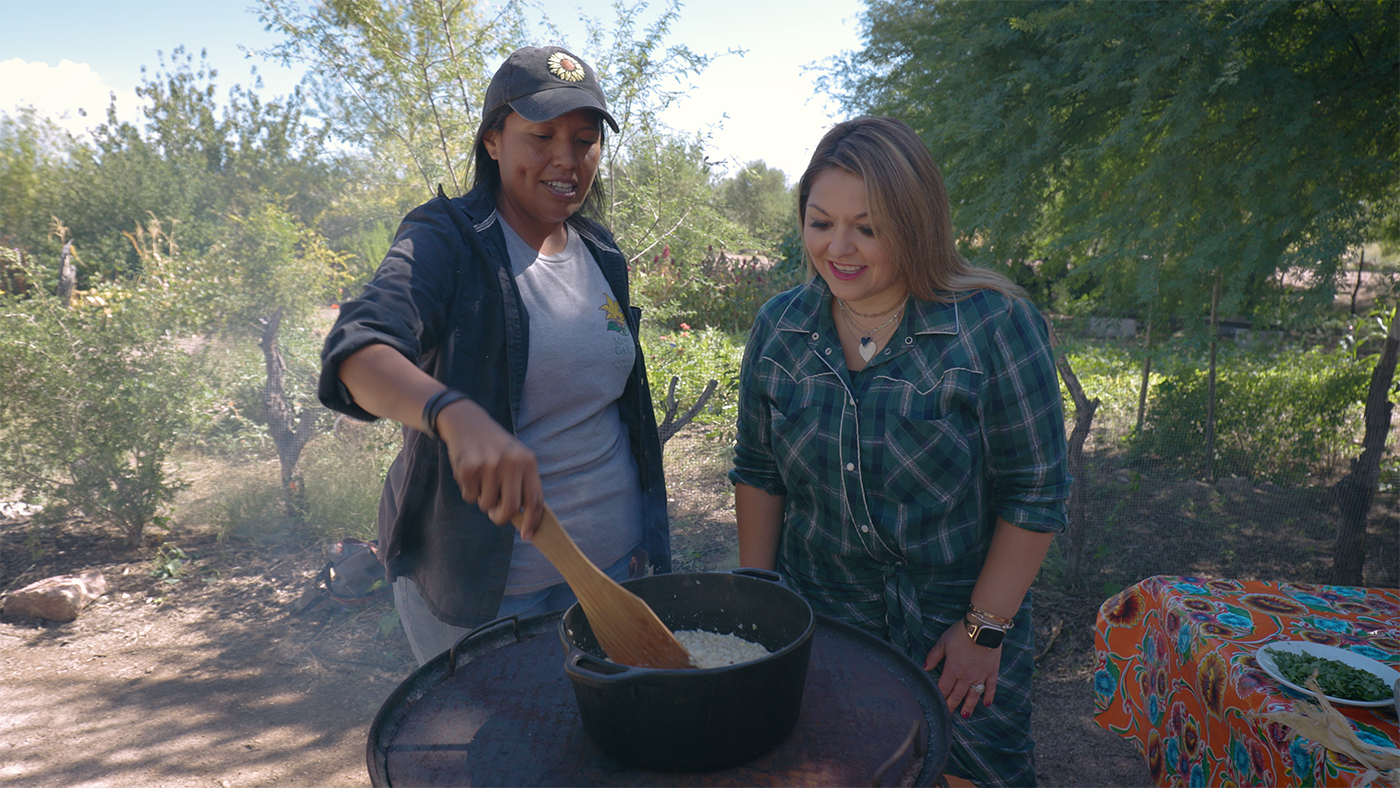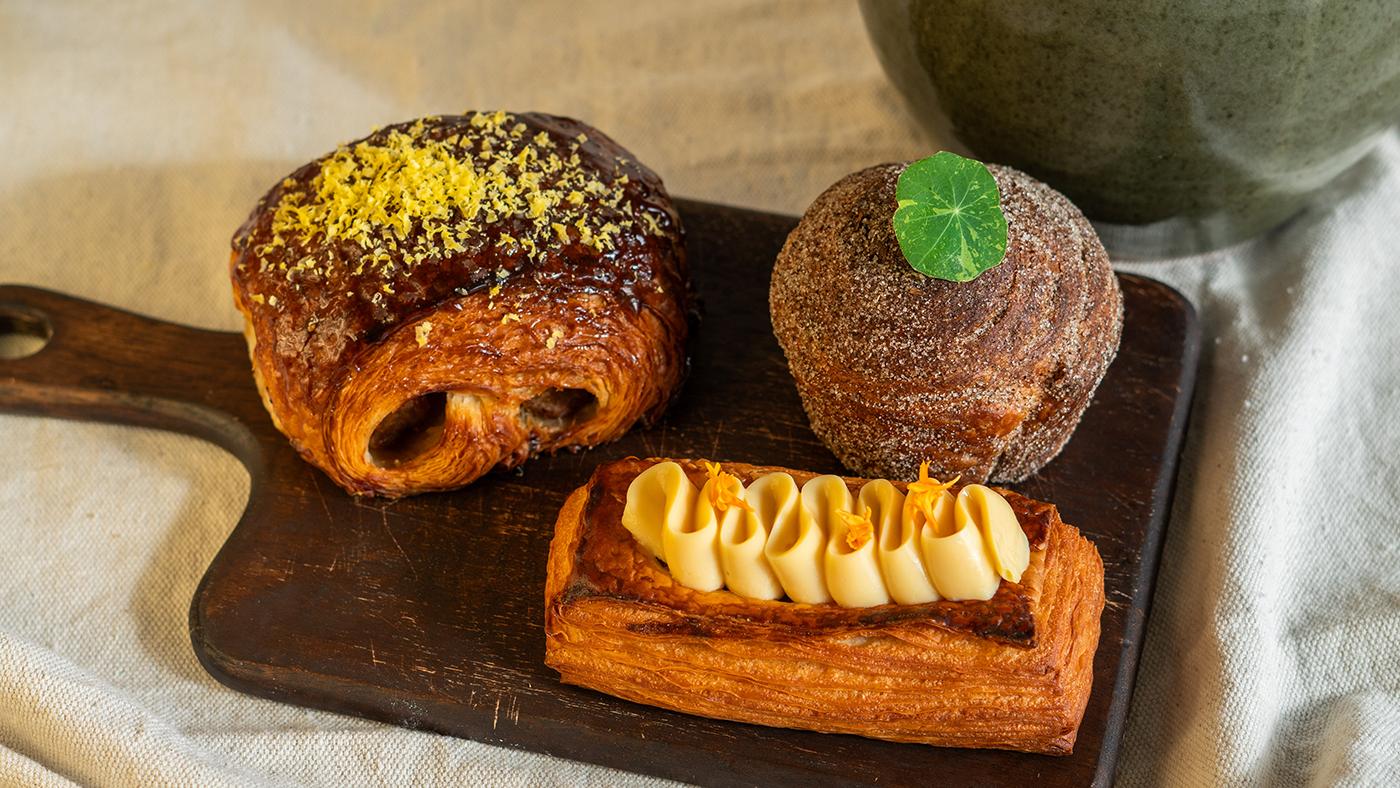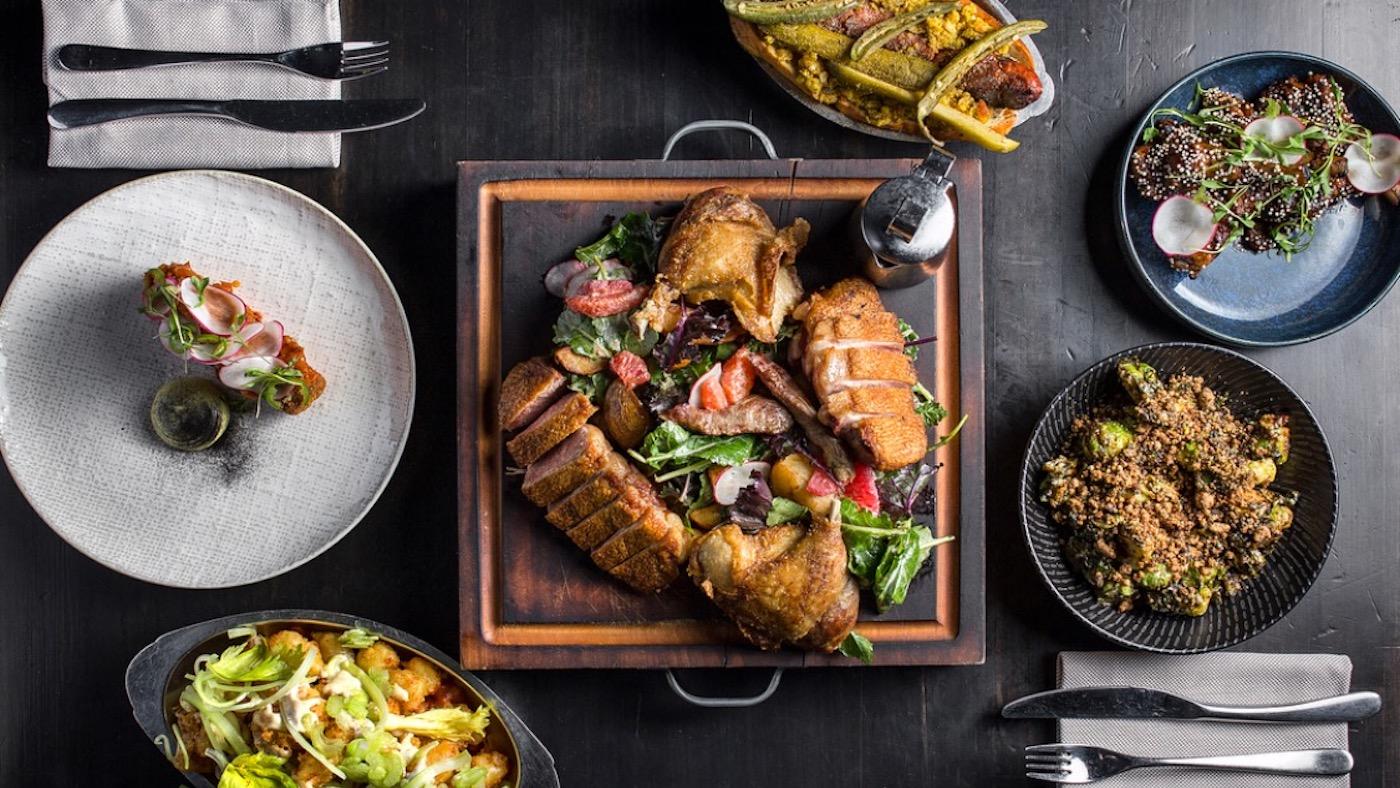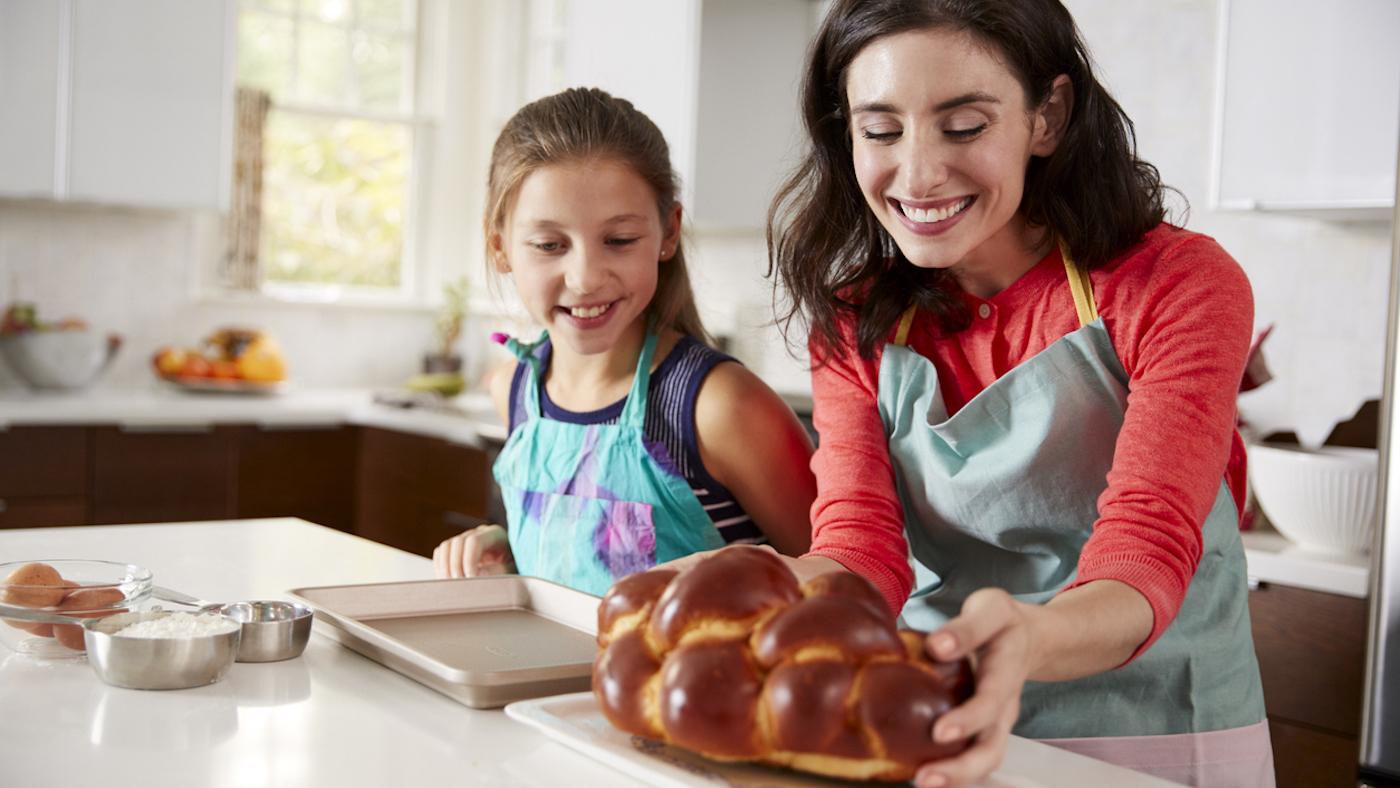A Refugee Mother's Recipes Give Her Life and Inspire One of Chicago's Only Cambodian Restaurants
Daniel Hautzinger
September 13, 2022
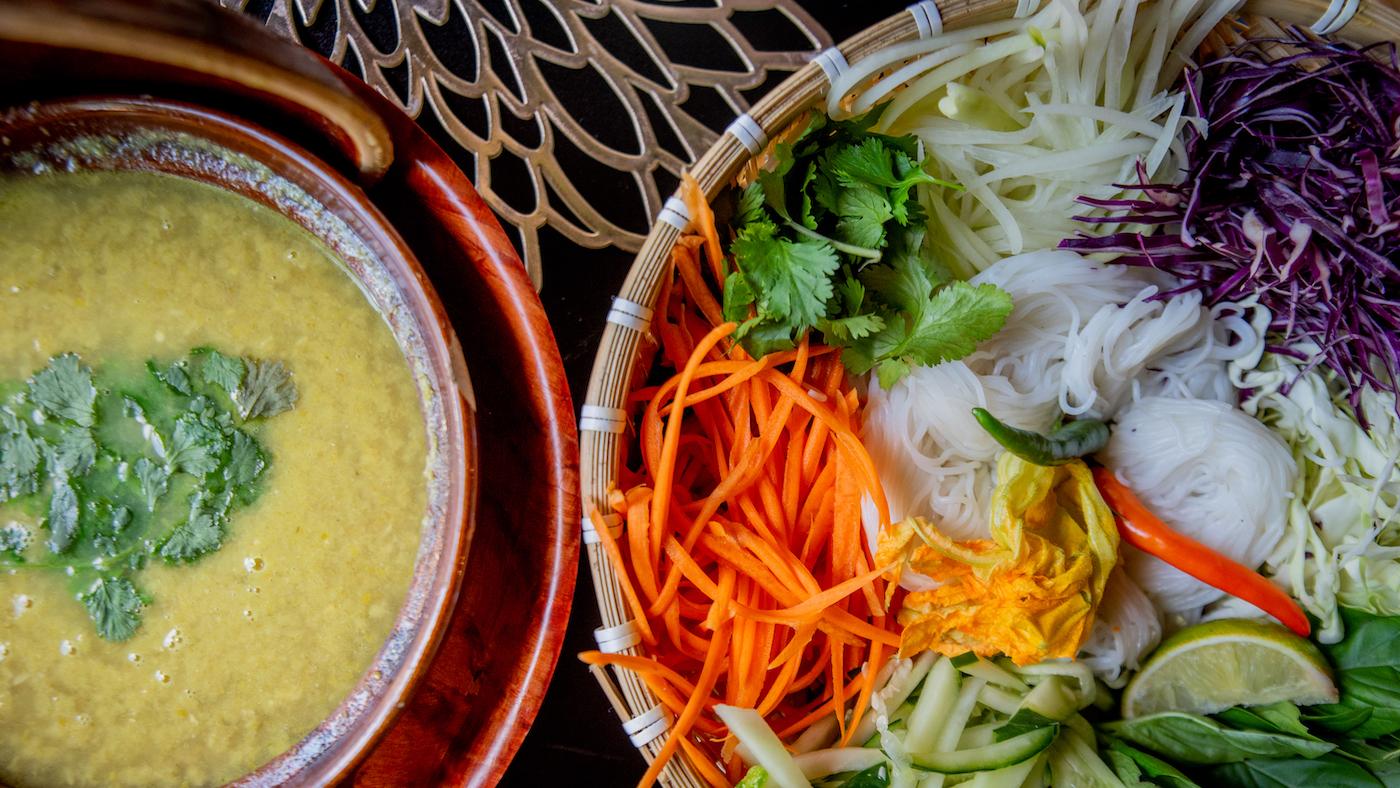
Mona Sang used to hate when her mother Sarom Sieng prepared the Cambodian dish prahok ktiss at home. “When she used to make it, my whole clothes used to smell like the fermented fish,” she recalls. Prahok, a fermented fish paste, is a staple of Khmer cuisine. “Then going to school, I was a stinky kid, and I got made fun of a lot. But now that I think about it, it’s like, I wasn’t a stinky kid. They were really lucky to smell me!”
Now prahok ktiss—a kind of dip made from prahok, pork, kroeung (lemongrass paste), chili, and coconut milk, served with fresh vegetables—is one of her favorite things to eat, and a highlight of the menu at her new Rogers Park restaurant, Khmai Fine Dining. (Try Sang and Sieng’s recipe for prahok ktiss.) The smell of prahok now holds fond associations for Sang: “It reminds me of childhood, coming to America, cooking…”
Sang was born in a refugee camp near the border of Thailand and Cambodia. Her mother had fled the genocide of Pol Pot’s Khmer Rouge in Cambodia, in which an estimated 1.7 to 2.2 million people died between 1975 and 1979. Among them was Sieng’s husband; two of her sons also died as the family escaped through the jungle to the refugee camp.
Sang’s aunt was already in the United States and found a church to sponsor Sieng and her four surviving children to come to America. After a stop in New York, they settled in Chicago.
Through it all, cooking was a comfort, even when the family had little. “She just has a lot of passion for it. It’s like she’s putting her heart into it,” says Sang of her mother’s love of cooking. “It was sort of her way of dealing with her own personal things.” Sieng had an arranged marriage, several children when she was young, and an unwelcoming family; cooking was an escape.
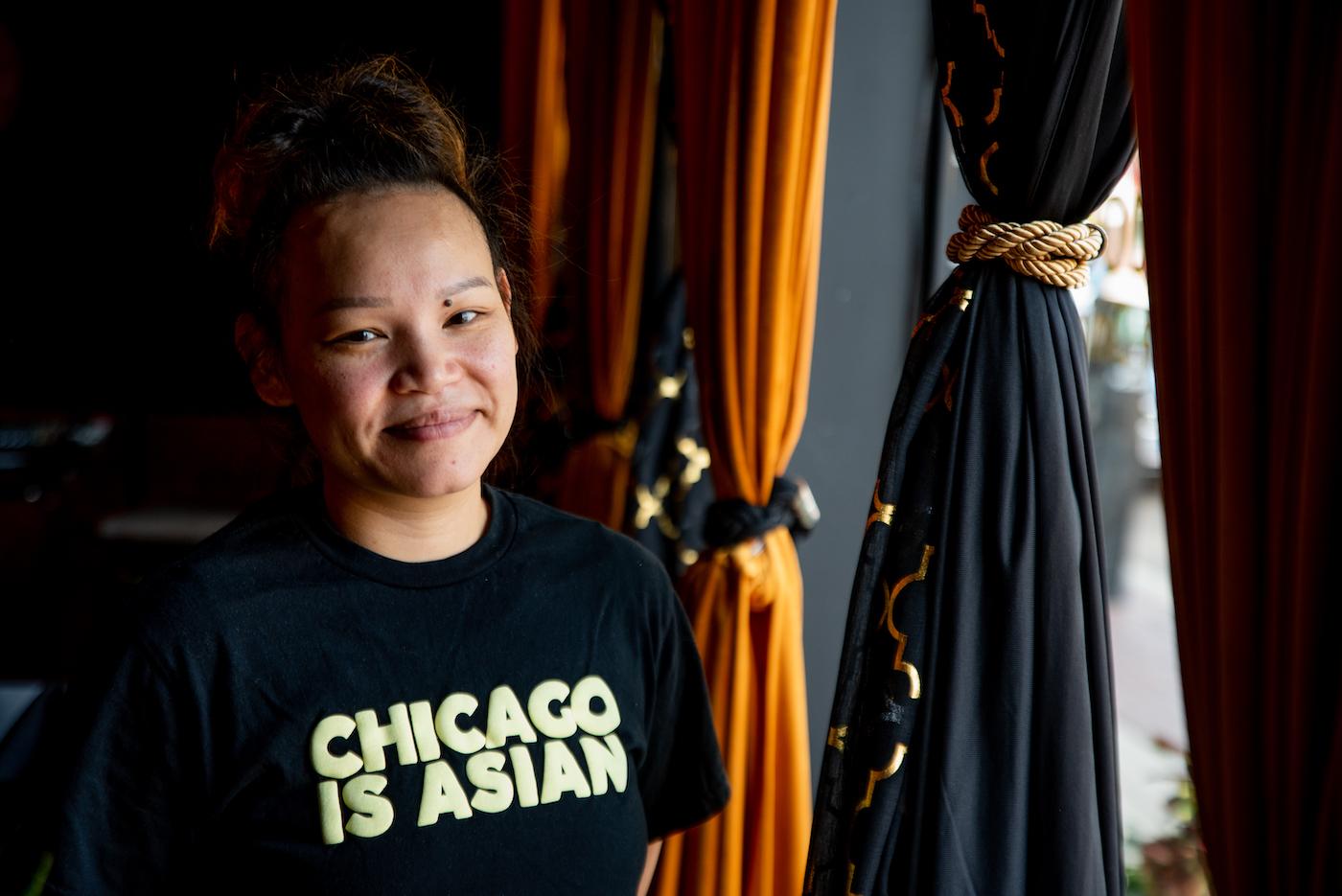 “We’ve been lost for so long," says Mona Sang. "I want to be able to bring my culture back.” Photo: WTTW/Kathleen Hinkel
“We’ve been lost for so long," says Mona Sang. "I want to be able to bring my culture back.” Photo: WTTW/Kathleen Hinkel
“During the war, she would try to find whatever she could to cook,” says Sang. Once she arrived in Chicago and began making money through side jobs such as cleaning houses, she would search out familiar ingredients at Asian grocery stores to make Cambodian food—a supplement to government-provided foodstuffs such as powdered milk, peanut butter, and macaroni and cheese that perplexed Sieng, who couldn’t read or write English.
With limited room in their small apartment, Sang slept in the pantry—“I always joke, I’m the Harry Potter without the magic!”—and would sneak into the kitchen, enticed by smells, to see what her mother was cooking when she woke up early to prepare food for her children—curry, or eggs fried with garlic, green onion, shallots, and fish sauce over rice. Sieng also catered events through the church that sponsored her, becoming known for her egg rolls—which are now on the menu at Khmai as Mai’s Eggrolls. (“Mai” means mom; “Khmai” is a portmanteau of Khmer and mai.)
But Sang didn’t become interested in cooking until later in life, when she got a job as a cashier at a gyro place, where she eventually learned to cook. She joined Lettuce Entertain You’s Ivy Room event space as a caterer, where she received a crash course in culinary education.
Then the pandemic shut businesses down, and Sieng, already hurting from the sudden death by heart attack of one of her sons, settled into a depression, according to Sang. “Basically, the pandemic took everything that she loved…It was just to the point where I thought, this is serious, I’m going to lose her,” says Sang. “And then I thought about how she loved cooking.”
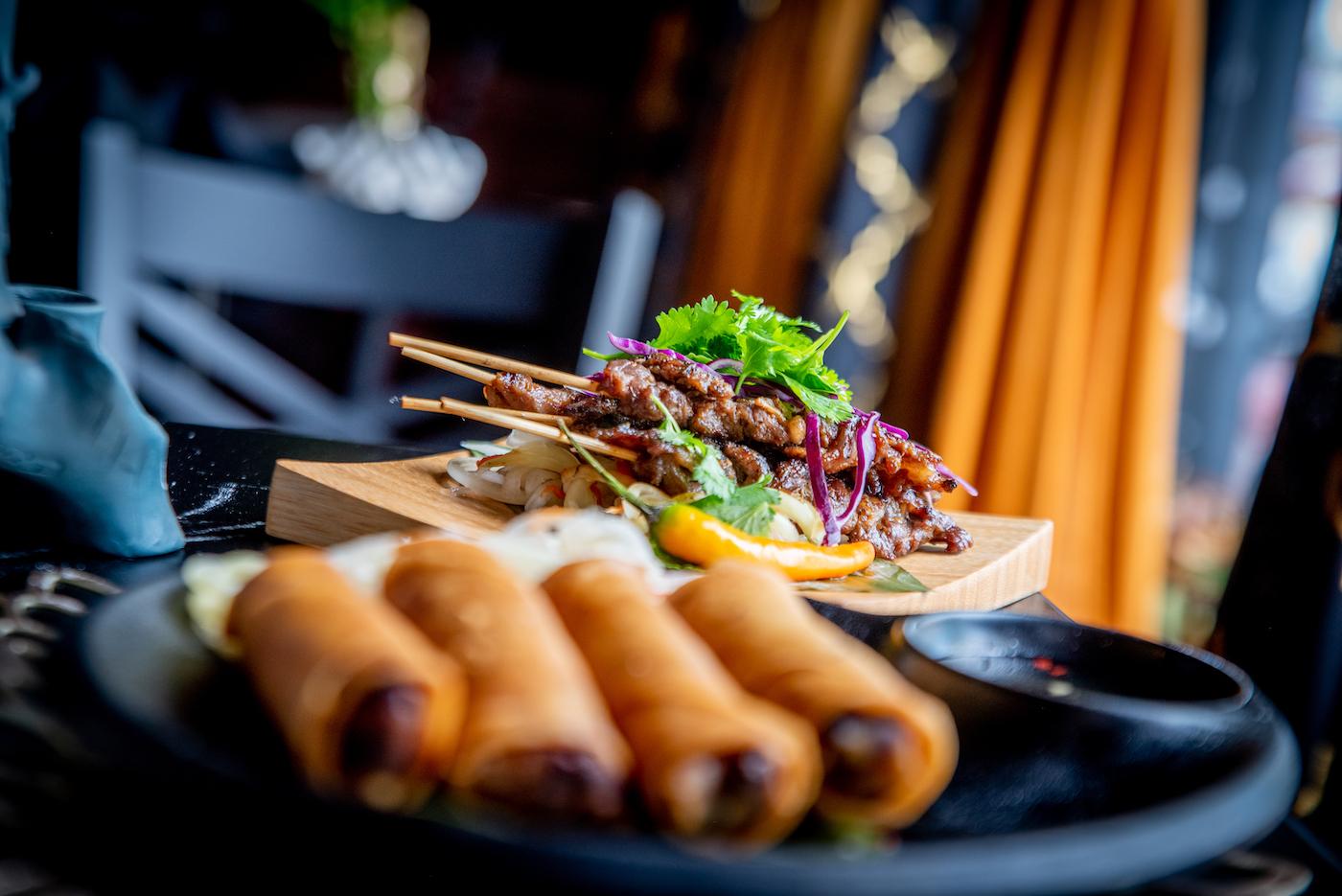 The beef skewers Sach Koh Ang share space on the menu with the eggrolls Sarom Sieng once made to support herself through a catering business. Photo: WTTW/Kathleen Hinkel
The beef skewers Sach Koh Ang share space on the menu with the eggrolls Sarom Sieng once made to support herself through a catering business. Photo: WTTW/Kathleen Hinkel
So Sang decided to try to cook Cambodian food with her mom. “She just slowly started doing it with me. Like chopping the vegetables, she would say, ‘No, no, you’re doing this wrong!’ And then we just started cooking together.” Sang used her training from the Ivy Room to present the dishes beautifully and began sharing them on social media. Soon enough, she was fulfilling orders and eventually running a Cambodian food business with her mother from the kitchen of the church where her mom worked. In June of this year, she opened Khmai.
Chicago has an active Cambodian community—the Killing Fields Memorial at the National Cambodian Heritage Museum in Lincoln Square was the first memorial to the Khmer Rouge genocide in the U.S. But Khmai is only the second Cambodian restaurant currently in operation here. (The other, Hermosa, is a sandwich shop by day but presents more traditional Cambodian food in a private dining format at night.) “The food industry in Chicago is huge, and I want to change that there are no Cambodian restaurants,” says Sang. “We’ve been lost for so long. I want to be able to bring my culture back.”
Khmai is proving popular with some Chicago Cambodians, too. “I’ve taken my mom there, my grandma there, and my dad there,” says Eleanor Lay, who works for the Cambodian Association of Illinois and the National Cambodian Heritage Museum. “We don’t get to go to Cambodian restaurants around here, so going there—I feel like ‘happy’ is not even the right word. Seeing my family able to enjoy our food in a restaurant setting is so different for us…Whenever I go out and eat with my friends, we could always find a restaurant with their food and culture, but I could never show them our food.”
While Boston’s French-Cambodian restaurant The Elephant Walk has been around since 1991 and the now-shuttered Oakland restaurant Nyum Bai garnered national acclaim, Cambodian restaurants are still a rarity in the U.S. Sang wants Khmai to not only provide delicious food but also to help inform people about Khmer culture and food and preserve recipes for future generations such as her children.
 Sieng "was able to retain her recipes in her head and was able to pass it on," says Sang, who serves recipes like Somlor Machu Kroeung now. Photo: WTTW/Kathleen Hinkel
Sieng "was able to retain her recipes in her head and was able to pass it on," says Sang, who serves recipes like Somlor Machu Kroeung now. Photo: WTTW/Kathleen Hinkel
“Two million people died in the war,” Sang says. “And there were recipes, our traditional dishes—a lot of them got lost. A lot of the people that know them got killed. But [my mom] was able to retain her recipes in her head and was able to pass it on.” Sieng won’t let Sang write recipes down when they cook together—she insists that her daughter memorize and internalize them, just like her.
One defining flavor of Cambodian cuisine is prahok: “That’s what makes us different from all the other Southeast Asian countries,” Sang says. “There’s a technique to using it; if you know how to use it, it elevates your flavor even higher, like, ‘Wow, what is this!’” Kroeung—lemongrass paste that also often features galangal and makrut lime—is another. “I think of a very well-balanced meal,” says Lay. “There’s starch, lots of veggies, a lot of fish. It’s very healthy, but you’re not bored.”
Sang changes her menu every week in order to feature as many Cambodian dishes (and Sieng’s recipes) as possible. Cooking with her mother not only allows her to learn recipes from her culture; it also provides her the opportunity to connect with her mother and better understand her traumatic past.
“She doesn’t talk about it,” says Sang, “but through cooking together, it comes out slowly for her.” While in the kitchen together, Sang once slipped in a question about the two sons Sieng lost fleeing the Khmer Rouge: “’Where did you bury them?’ She said, ‘I didn’t bury them. I left them. I had to.’ And she just went on talking about the food. That’s the only way that I would be able to get her story.
“She’s been through so much. She’s seen so much that people shouldn’t see. But, through food, through cooking, it gave her a new life.”
Recipe: Prahok Ktiss

